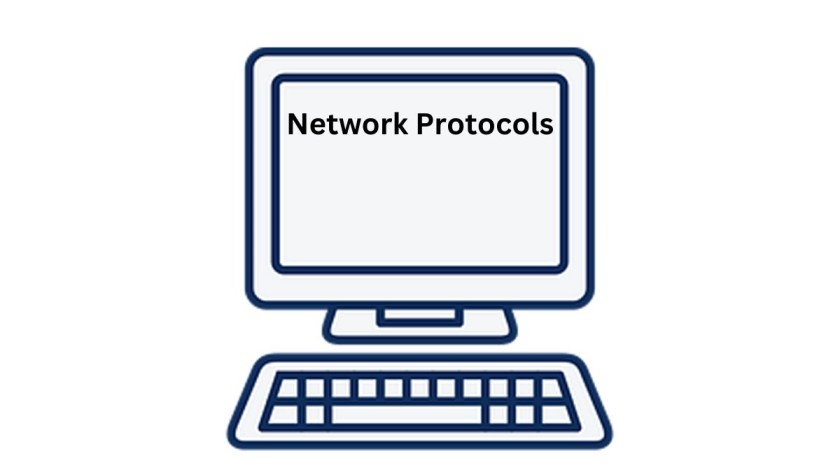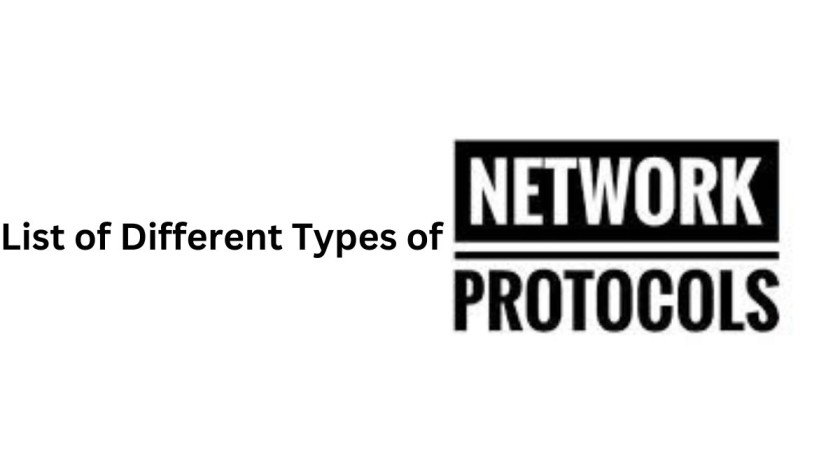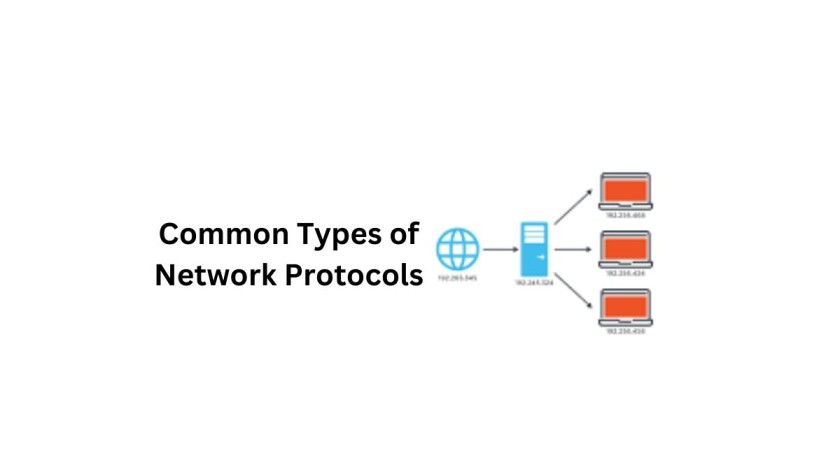Table of Contents
Introduction:
Greetings! I am delighted to welcome you to the ultimate guide on network protocols. This comprehensive resource is designed to take you on a journey to unravel the intricacies of various network protocols, their significance, and how they shape the modern digital landscape.
If you’re a seasoned network engineer seeking to expand your knowledge or a curious enthusiast eager to learn about the diverse array of network protocols, this guide is for you.
In this guide, we’ll delve into the details of different network protocols, including their functions, features, and applications. We’ll explore the fundamental concepts of networking, such as data transmission, packet routing, and communication protocols. You’ll also learn about the different types of network protocols, such as TCP/IP, HTTP, DNS, and SMTP, among others.

Moreover, we’ll examine the advantages and disadvantages of each protocol, their impact on network performance, and how they’re used in different scenarios. We’ll also discuss the latest trends and developments in networking, such as the emergence of new protocols, the growth of the Internet of Things (IoT), and the evolution of network security.
By the end of this guide, you’ll have a comprehensive understanding of network protocols and their significance in modern networking. You’ll be equipped with the necessary knowledge to make informed decisions about network design, implementation, and troubleshooting.
So, let’s get started on this exciting journey of discovery!
(1) Understanding Network Protocols:
In this foundational chapter, we’ll lay the groundwork by explaining the fundamentals of network protocols. From defining what network protocols are to exploring their role in facilitating communication between devices, this section aims to provide a clear understanding of the underlying principles.
(2) Common Types of Network Protocols:
Delve into the world of network protocols as we explore the most common types utilized in modern networks. From TCP/IP to HTTP, DNS to SMTP, we’ll dissect each protocol, elucidating their functionalities, and highlighting their relevance in different networking scenarios.
(3) Transport Layer Protocols:
Journey deeper into the layers of network communication as we focus on transport layer protocols. Unravel the mechanisms of TCP (Transmission Control Protocol) and UDP (User Datagram Protocol), understanding their distinct characteristics, advantages, and applications.
(4) Network Layer Protocols:
In this chapter, we’ll shine a spotlight on network layer protocols such as IP (Internet Protocol), ICMP (Internet Control Message Protocol), and ARP (Address Resolution Protocol). Gain insights into how these protocols enable routing, addressing, and error detection in network communications.
(5) Application Layer Protocols:
Explore the application layer protocols that govern specific functions and services, including HTTP, FTP, SNMP, and SMTP. Understand how these protocols facilitate interactions between applications, enabling tasks such as web browsing, file transfer, network management, and email communication.
(6) Emerging Protocols and Future Trends:
Stay ahead of the curve as we delve into emerging network protocols and future trends shaping the networking landscape. From IPv6 adoption to the rise of IoT (Internet of Things) protocols, we’ll explore the innovations driving the evolution of network communication.
Conclusion:

The world of network protocols is vast and dynamic, playing a crucial role in enabling seamless communication across digital networks. By understanding the different types of network protocols and their functionalities, you can navigate the complexities of modern networking with confidence. Whether you’re a novice or an expert, this guide serves as a valuable resource for unlocking the mysteries of network protocols.
Remember, staying updated with the latest advancements and trends is key to mastering the art of networking. Keep exploring, experimenting, and learning, and you’ll be well-equipped to harness the power of network protocols in your endeavors.
To delve deeper into the world of network protocols and stay informed about the latest developments, subscribe to our newsletter and join our community of networking enthusiasts.
With our comprehensive guide, you’ll not only enhance your understanding of network protocols but also position yourself for success in the ever-evolving realm of networking.
List of Different Types of Network Protocols:

- TCP/IP (Transmission Control Protocol/Internet Protocol): This is the fundamental protocol suite used for transmitting data across the Internet and many other networks. It consists of two main protocols: TCP, which ensures reliable delivery of data, and IP, which handles addressing and routing.
- UDP (User Datagram Protocol): UDP is a connectionless protocol that provides faster transmission of data but does not guarantee delivery or order of packets. It’s commonly used for real-time applications like streaming media or online gaming.
- HTTP (Hypertext Transfer Protocol): HTTP is the protocol used for transmitting web pages and other content on the World Wide Web. It defines how web browsers and servers communicate, enabling the retrieval and display of web content.
- FTP (File Transfer Protocol): FTP is used for transferring files between a client and a server on a computer network. It provides a way to upload, download, and manage files on remote servers.
- SMTP (Simple Mail Transfer Protocol): SMTP is the standard protocol for sending and receiving email messages over the Internet. It defines how email clients and servers communicate to transfer messages between senders and recipients.
- DNS (Domain Name System): DNS is a protocol used to translate human-readable domain names (like example.com) into IP addresses that computers use to identify each other on a network. It facilitates the mapping of domain names to their corresponding IP addresses.
- SNMP (Simple Network Management Protocol): SNMP is used for managing and monitoring network devices such as routers, switches, and servers. It allows network administrators to collect information, set configuration parameters, and receive alerts about network events.
- SSH (Secure Shell): SSH is a protocol used for securely accessing and managing remote computers over a network. It provides encrypted communication between the client and server, preventing eavesdropping and unauthorized access.
- SSL/TLS (Secure Sockets Layer/Transport Layer Security): SSL/TLS protocols provide secure communication over a computer network, typically used for encrypting data transmitted between web browsers and servers. They ensure confidentiality, integrity, and authentication of transmitted data.
- ICMP (Internet Control Message Protocol): ICMP is used for diagnostic and error reporting in IP networks. It allows devices to communicate error messages, test network connectivity, and perform functions like ping and traceroute.
Read more- Gear Up Exploring the Top 10 Motorcycle Clothing Brands for Riders
FAQ:
(1) What are network protocols?
Network protocols are sets of rules or conventions that govern communication between devices over a network. They define the format, timing, sequencing, and error control of data transmission, ensuring compatibility and interoperability between different systems and devices.
(2) What is the advantage of network devices using open standard protocols?
One advantage of network devices using open standard protocols is increased interoperability and compatibility. Open standard protocols are widely supported across different platforms and vendors, enabling seamless communication and integration between diverse networking equipment and systems.
(3) Which of the following are used to generate/create a message digest by the network security protocols?
Network security protocols often use cryptographic hash functions, such as SHA-256 or MD5, to generate message digests. These message digests serve as unique identifiers for data integrity verification and are used to ensure that transmitted data remains unchanged during transit.
(4) What are the 7 network protocols?
The 7 network protocols typically refer to the OSI (Open Systems Interconnection) model’s seven layers, which include Physical, Data Link, Network, Transport, Session, Presentation, and Application layers. Each layer corresponds to specific protocols and functionalities within the networking stack.
(5) Which device is used to connect one network with another network that uses different protocols?
A router is typically used to connect one network with another network that uses different protocols. Routers operate at the network layer (Layer 3) of the OSI model and can route data between networks based on IP addresses, regardless of the underlying protocols used within each network.
(6) Which of the following protocols will be used by a data analyzer on the network?
A data analyzer on the network may use protocols such as TCP/IP, HTTP, or SNMP (Simple Network Management Protocol) to capture, analyze, and monitor network traffic for troubleshooting, performance optimization, or security purposes.
(7) What are protocols in a computer network?
Protocols in a computer network are standardized rules and conventions that govern communication between devices. They define how data is formatted, transmitted, received, and interpreted, ensuring reliable and efficient data exchange across the network.
(8) Which of the below are common network protocols?
Common network protocols include TCP/IP, UDP, HTTP, FTP, SMTP, DNS, SNMP, and SSH, among others. These protocols serve various functions and are widely used in networking for tasks such as data transfer, web browsing, email communication, and network management.
(9) Which communication protocols are used for the M2M (Machine-to-Machine) local area network?
Common communication protocols used for M2M local area networks include MQTT (Message Queuing Telemetry Transport), CoAP (Constrained Application Protocol), and Zigbee. These protocols enable communication and data exchange between interconnected devices in IoT (Internet of Things) environments.
(10) Which of the situations might not require multiple routing protocols in a network?
A small, homogeneous network with a single type of device and uniform network requirements may not require multiple routing protocols. In such cases, a single routing protocol can adequately handle routing tasks, simplifying network management and configuration.
(11) Which of the following protocols operates at the network layer of the OSI model?
Protocols that operate at the network layer of the OSI model include IP (Internet Protocol), ICMP (Internet Control Message Protocol), and OSPF (Open Shortest Path First). These protocols are responsible for routing, addressing, and packet forwarding within the network.
(12) Which of these protocols reside in layer 3 – network in the OSI model?
Protocols that reside in layer 3 (Network layer) of the OSI model include IP (Internet Protocol), ICMP (Internet Control Message Protocol), and BGP (Border Gateway Protocol). These protocols handle addressing, routing, and packet forwarding within the network.
(13) What are the types of network protocols?
Network protocols can be categorized into various types, including communication protocols (e.g., TCP/IP, UDP), routing protocols (e.g., OSPF, BGP), application layer protocols (e.g., HTTP, FTP), and security protocols (e.g., SSL/TLS, IPsec), among others.
(14) What is used to connect to the network using different protocols?
A gateway device is used to connect to the network using different protocols. Gateways act as protocol converters, translating data between different networking protocols to facilitate communication between heterogeneous networks.
(15) What are the network protocols that SQL servers support?
SQL servers typically support network protocols such as TCP/IP, Named Pipes, and Shared Memory for client-server communication. These protocols enable clients to connect to SQL servers over the network and perform database operations.
(16) Which of the following protocols is a network layer encryption protocol?
IPsec (Internet Protocol Security) is a network layer encryption protocol used to secure IP communications by authenticating and encrypting data packets. It operates at the network layer of the OSI model and provides confidentiality, integrity, and authentication for network traffic.
(17) Which type of security vulnerability exposes protocols and services on a network?
A vulnerability known as protocol or service enumeration exposes protocols and services on a network. Attackers exploit this vulnerability to gather information about the network’s infrastructure, identify potential weaknesses, and launch targeted attacks against specific services or protocols.
(18) Which statement is correct about network protocols?
Network protocols are standardized rules and conventions that govern communication between devices over a network. They define how data is formatted, transmitted, received, and interpreted, ensuring seamless interoperability and efficient data exchange across diverse networking environments.


1 thought on “Exploring the Diverse World of Network Protocols: A Comprehensive Guide”